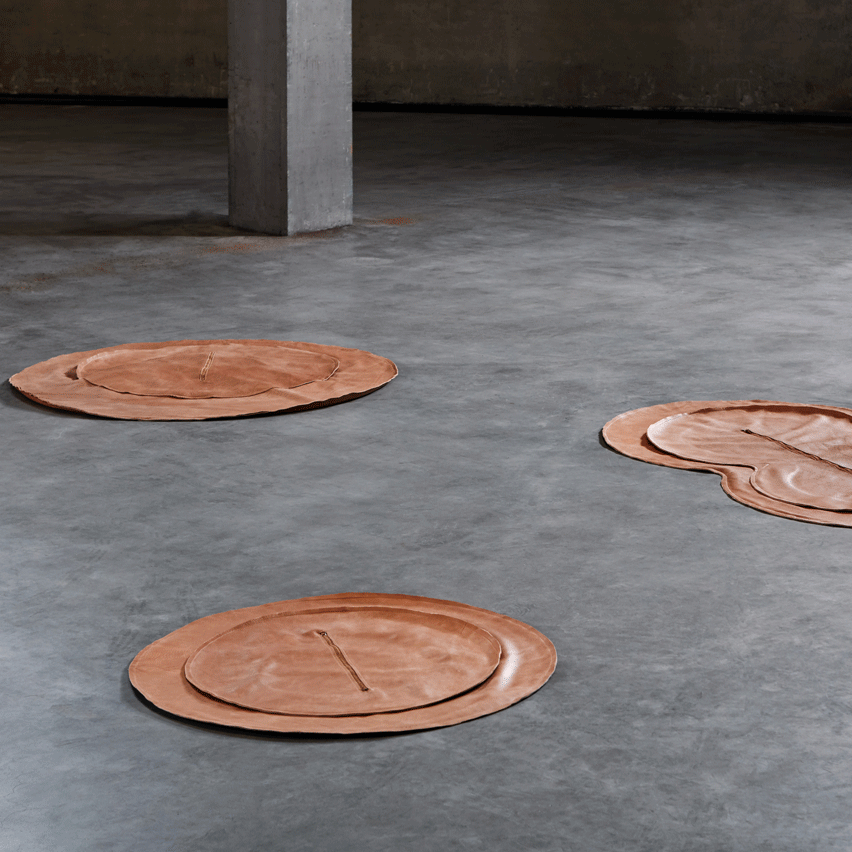
Unusual, innovative and avant-garde approaches to seating were among the highlights of Dutch design fair Object Rotterdam, which took place earlier this month. Anna Winston picks six of the most intriguing chairs from the annual event's crop of up-and-coming talent.
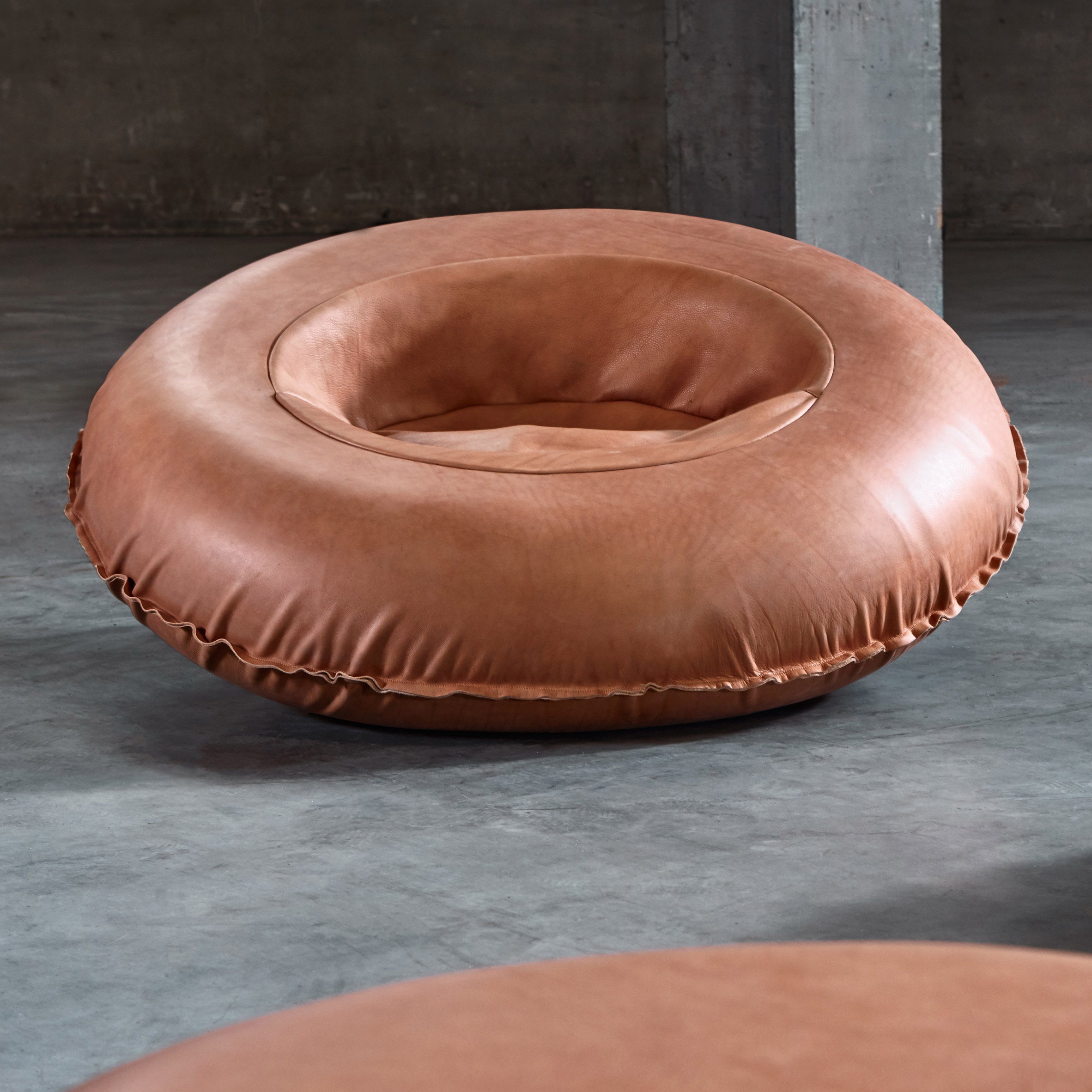
Inflatable Leather by Satomi Minoshima
This collection of inflatable leather chairs by Design Academy Eindhoven graduate Satomi Minoshima proposes a new luxury and long-lasting take on blow-up furniture.
Hard-wearing cow leather covers an inflatable rubber inner-tube, with the idea that the material will age and become more desirable over time.
"I believe that inflatable products have the potential to fit our present lifestyle, which is becoming more and more nomadic," said Minoshima. "However, inflatable products have a short lifespan and the vinyl material often looks cheap, even though it is made well."
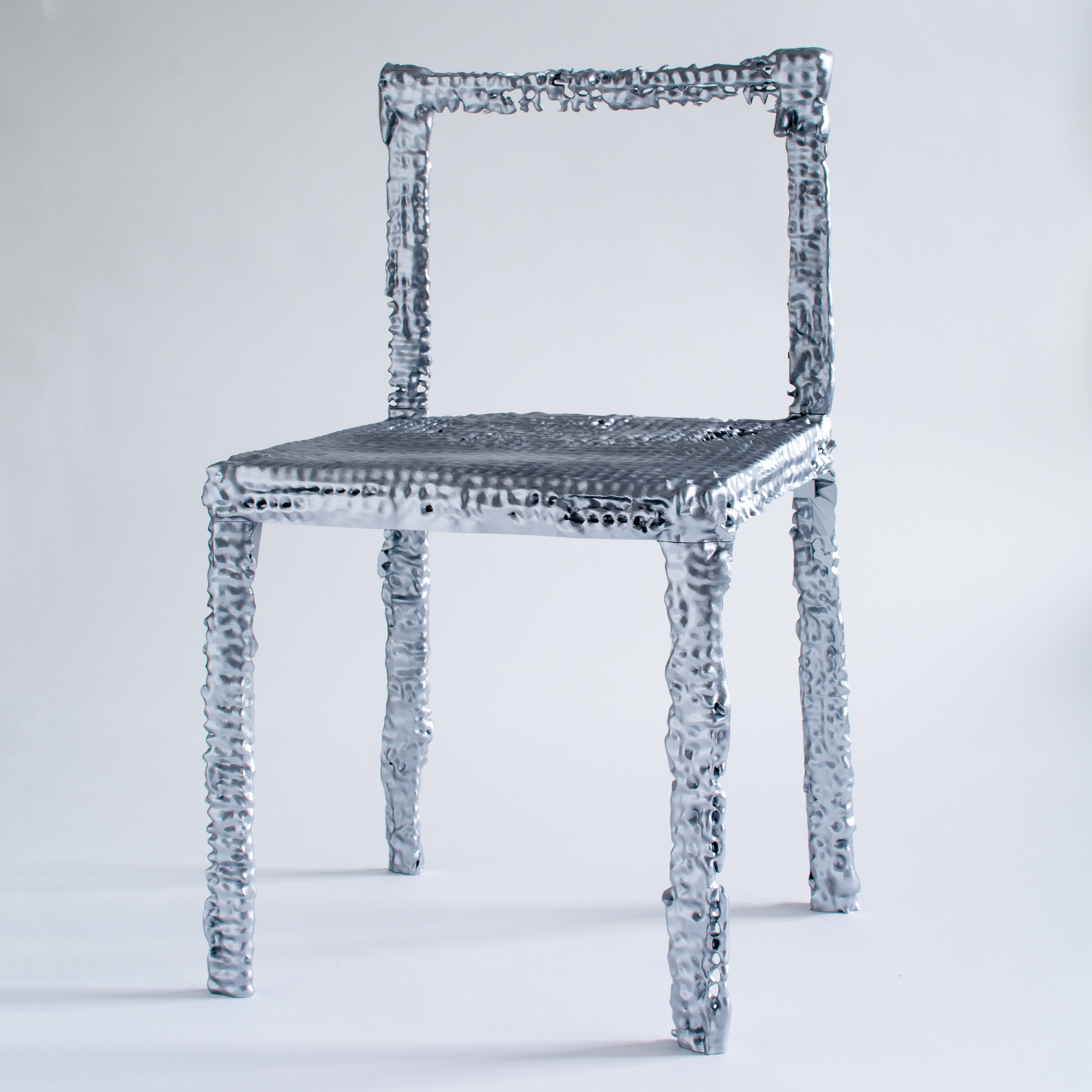
DMS-6 chair by Matteo Dal Lago
DMS-6 is a chair that is designed by both man and machine. Chinese 3D-printing firm Shining3D asked Matteo Dal Lago to develop a product that could show the potential of SLA printing – where objects are created by curing liquid resin with light.
He designed a scale model of a chair in chicken wire and scanned it to make a printable file, allowing the software to create a solid surface and fill in its own details in areas where it struggled to read the fine metal mesh.
"I'm designing the soul of the object," said Dal Lago. "You can scan it as many times as you want and you will always get a unique piece because it is made unique by the machine."
Dal Lago debuted his prototype at Object Rotterdam, and is working with a specialist in Eindhoven to create a functional metal version of the chair.
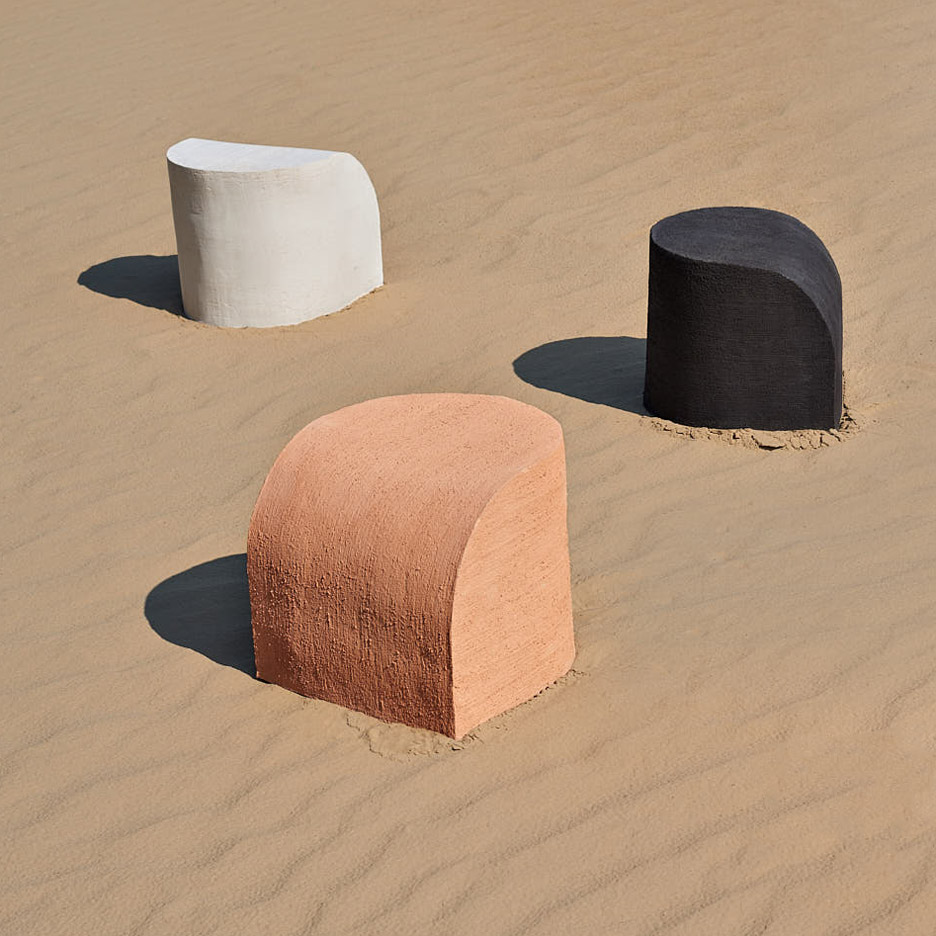
Scraped Earth by Rino Claessens
Scraped Earth was born out of Rino Claessens' attempts to alter the process of standard ceramic production to enable the creation of larger objects.
Each of the five stoneware ceramic stools is made by slip-casting and scraping clay around a mould, instead of pouring it into one.
The mould is made of foam with a double core, so it can easily be removed. Each stool is the colour of the material used to create it, with no glaze, pigment or paint added.
"The tools created to shape the clay all leave a unique texture," said Claessens. "This emphasises the energy put into the making process, showing a less anonymous approach to reproduction."
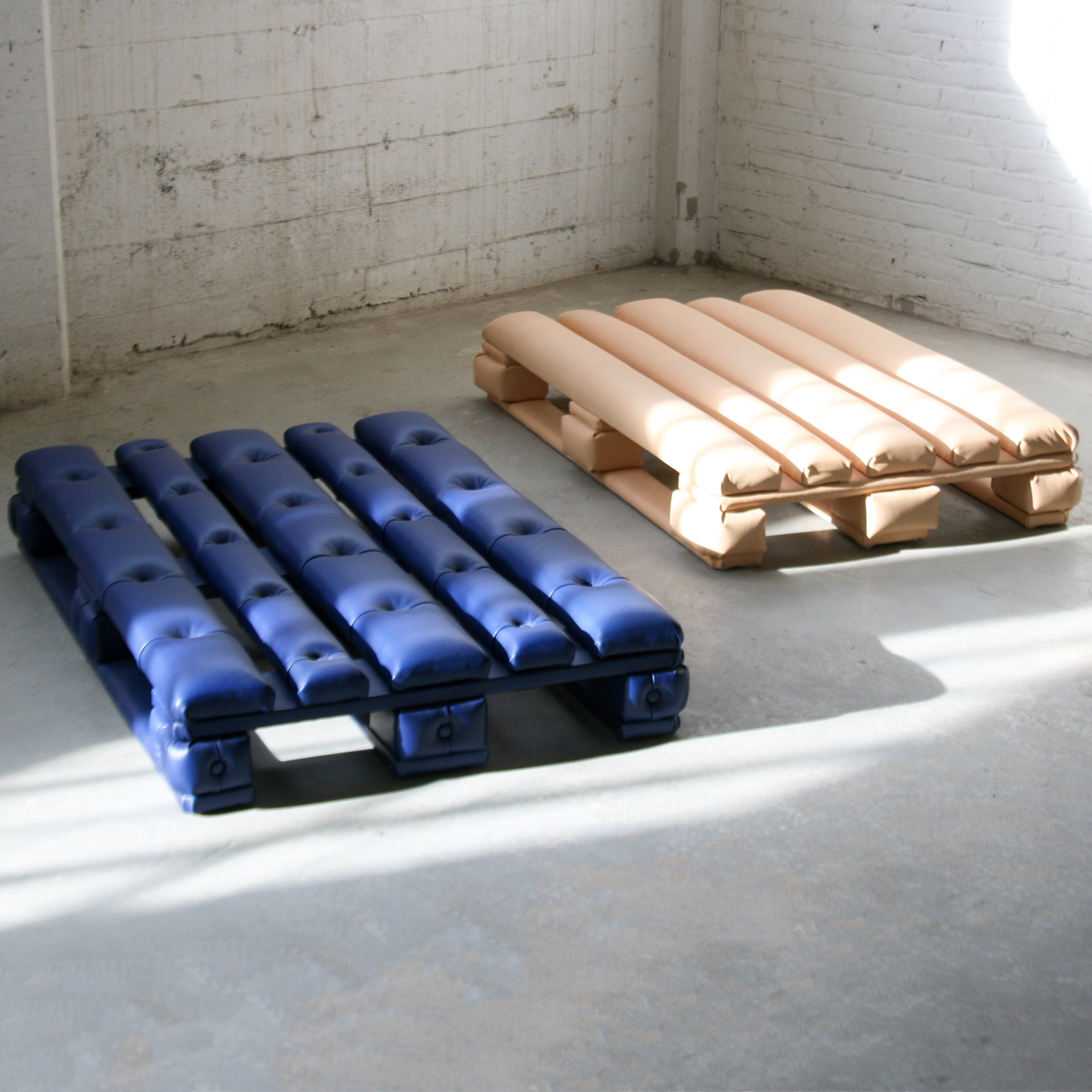
Palletsofa by Jarle
Jarle Veldman's Palletsofa is intended to be used in a variety of ways, inviting the viewer to reconsider the ubiquitous, humble wooden pallet.
"The function of the product is a bit warped," Veldman told Dezeen. "Pallets are an icon of the product world. I am a product designer, but we already have more than enough goods to transport and to buy and to throw out. I want to show the beauty of the products that facilitate all this."
The furniture pieces are made from both old and new wooden pallets. These are dismantled or purchased before assembly and upholstered as if they were normal chairs, with foam and fibrefill covered in leather, and then reassembled.
A blue version is covered with painted leather and finished with a button detail, while a natural-coloured seat uses a vegetable-tanned leather that will change appearance over time.
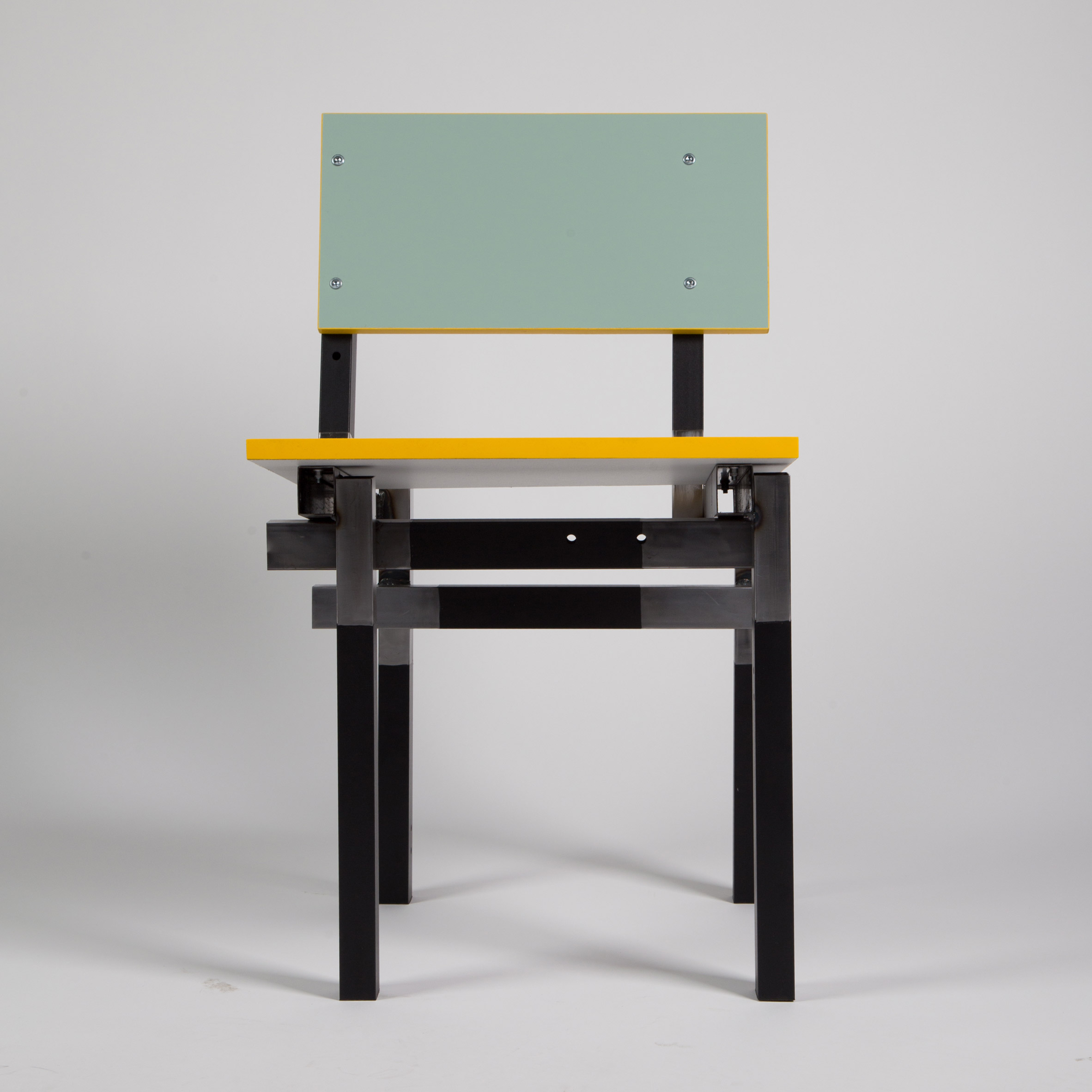
Gijsbrand Chair by Daan Snippe
This Gijsbrand Chair is part of the Under Production collection of furniture by Daan Snippe, which has been built using pieces from IKEA's discontinued Backaby couch.
"Under Production was a search to find a more efficient way for small-scale producers to produce their products while at the same time generating big profit margins," Snippe told Dezeen.
Snippe came across the BACKABY sofa for just €25 (£20) in the furniture giant's discount section while studying at the Maastricht Academy of Fine Arts. He decided to use the standardised pieces from it as a way to speed up his own production process and reduce his costs.
Each chair in the collection takes just one hour to produce, with the seat and backrest made from chipboard panels also sourced from IKEA's discount section.
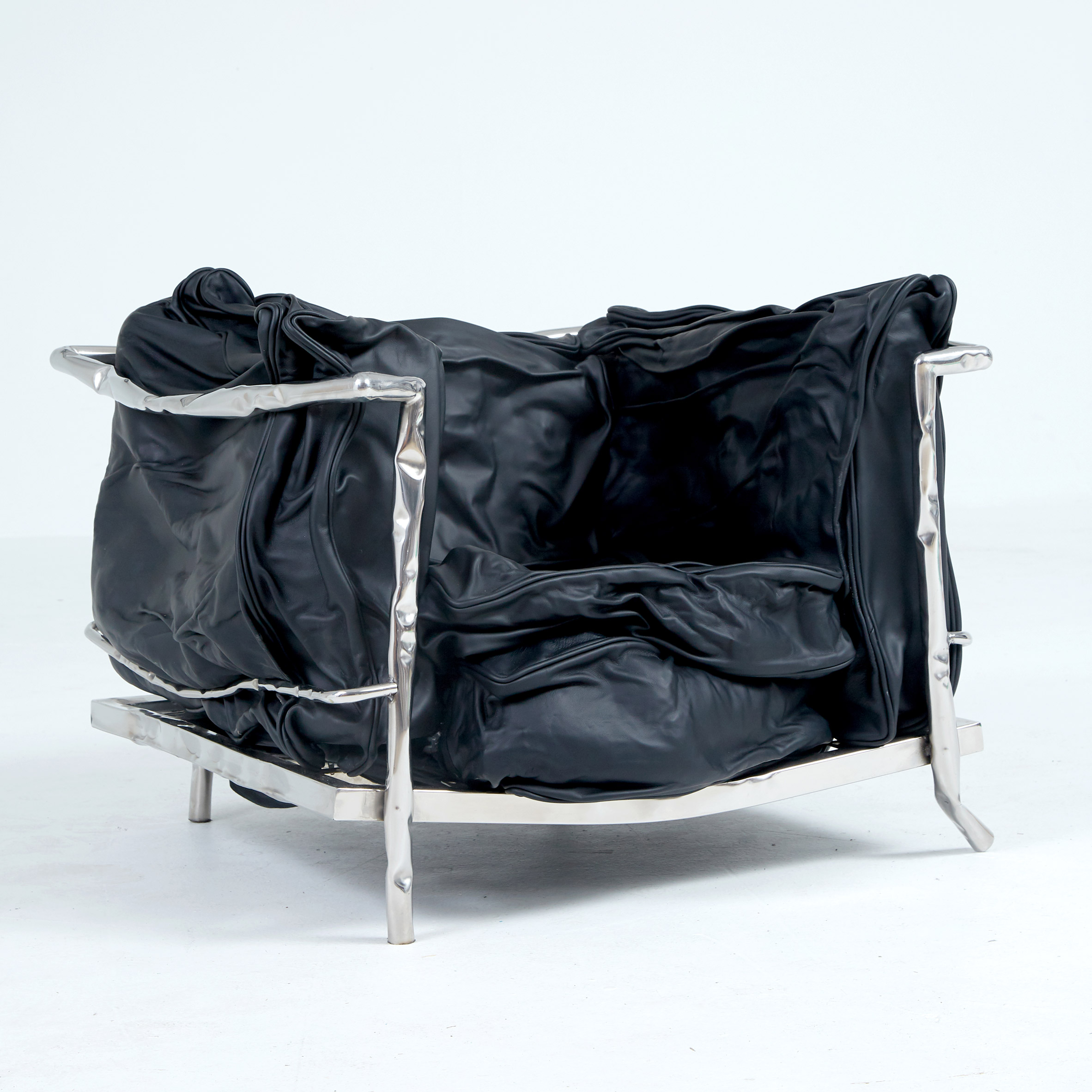
Deflated Icon by Orson Oxo Van Beek
Orson Oxo Van Beek chose the iconic LC2 by Le Corbusier to explore how the reinterpretation of existing objects can breathe new life into them.
The designer created an inflatable version of the chair, which he cast in a thick epoxy while it was deflating to create a mould.
This was then filled with expandable foam and leather was stretched over the resulting "deflated" cushions before being vacuum-sealed around the form.
"This is an ideal chair to deflate, as we notice the imperfections straight away," said Van Beek. "Through re-interpreting existing objects we can manipulate people's preconceived idea and value of objects."
The post Six alternative approaches to seating from Object Rotterdam 2020 appeared first on Dezeen.
https://ift.tt/37pYfTz
twitter.com/3novicesindia
No comments:
Post a Comment